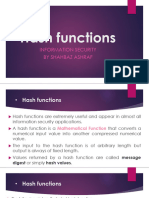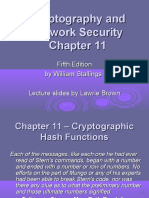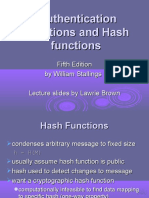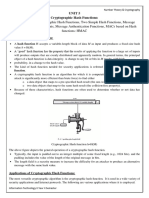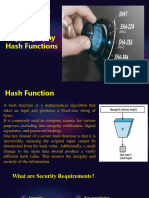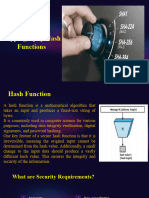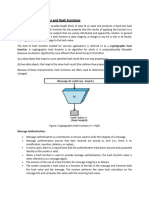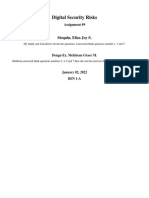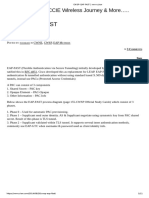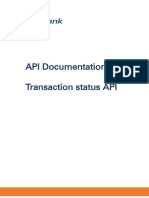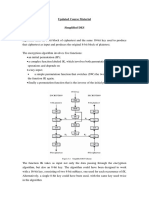0% found this document useful (0 votes)
100 views60 pagesCryptographic Hash Functions Guide
The document discusses cryptographic hash functions, their applications, and secure hash algorithms. It describes how hash functions work by taking a variable-length input and producing a fixed-length output. Hash functions are used for message authentication, digital signatures, one-way password files, and intrusion/virus detection. Simple hash functions and their limitations are described. Requirements for cryptographic hash functions include producing evenly distributed random outputs and being preimage resistant, meaning it is difficult to reverse the hash function to find the input that produced a given output.
Uploaded by
testCopyright
© © All Rights Reserved
We take content rights seriously. If you suspect this is your content, claim it here.
Available Formats
Download as PDF, TXT or read online on Scribd
0% found this document useful (0 votes)
100 views60 pagesCryptographic Hash Functions Guide
The document discusses cryptographic hash functions, their applications, and secure hash algorithms. It describes how hash functions work by taking a variable-length input and producing a fixed-length output. Hash functions are used for message authentication, digital signatures, one-way password files, and intrusion/virus detection. Simple hash functions and their limitations are described. Requirements for cryptographic hash functions include producing evenly distributed random outputs and being preimage resistant, meaning it is difficult to reverse the hash function to find the input that produced a given output.
Uploaded by
testCopyright
© © All Rights Reserved
We take content rights seriously. If you suspect this is your content, claim it here.
Available Formats
Download as PDF, TXT or read online on Scribd
/ 60
















